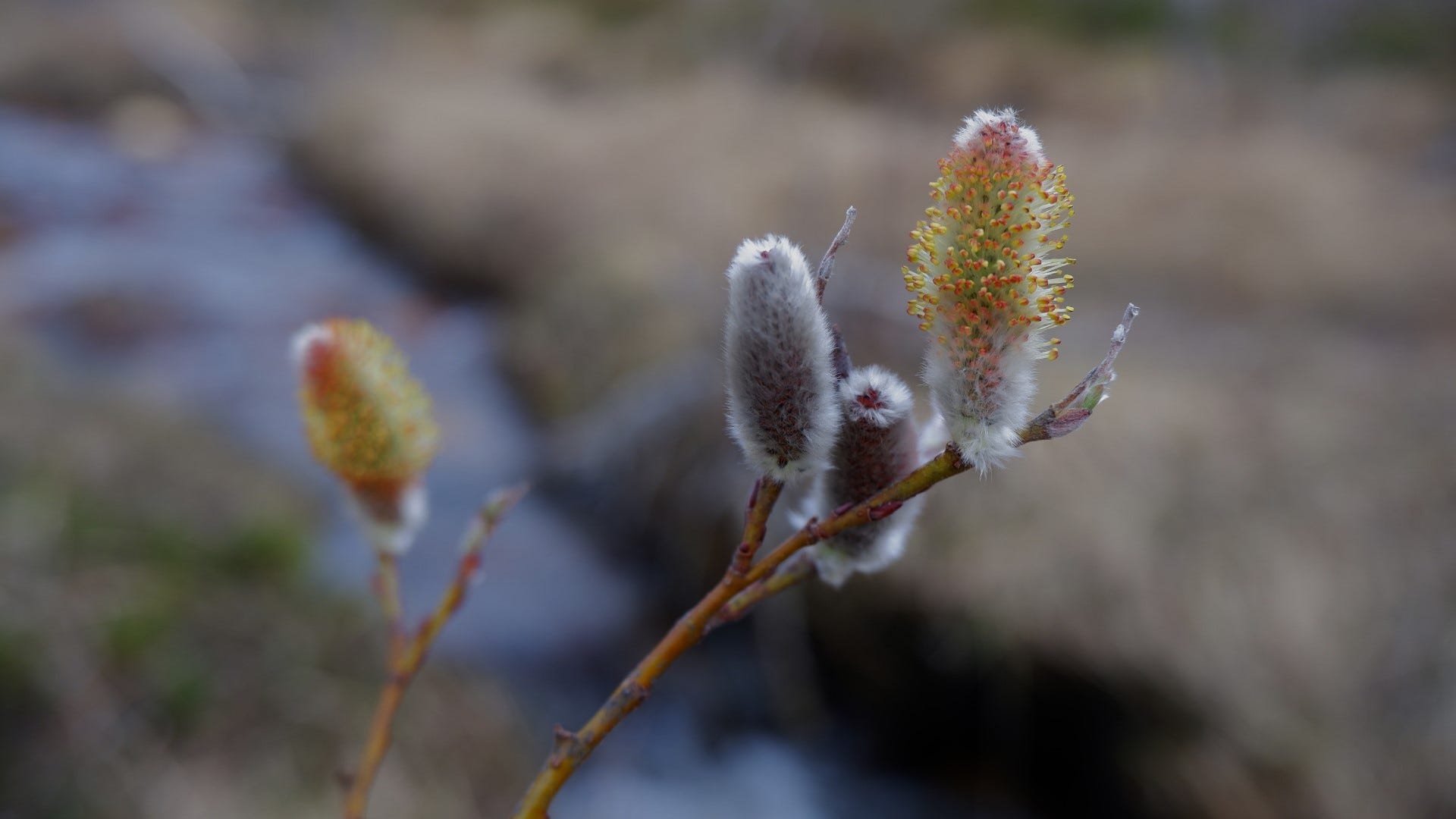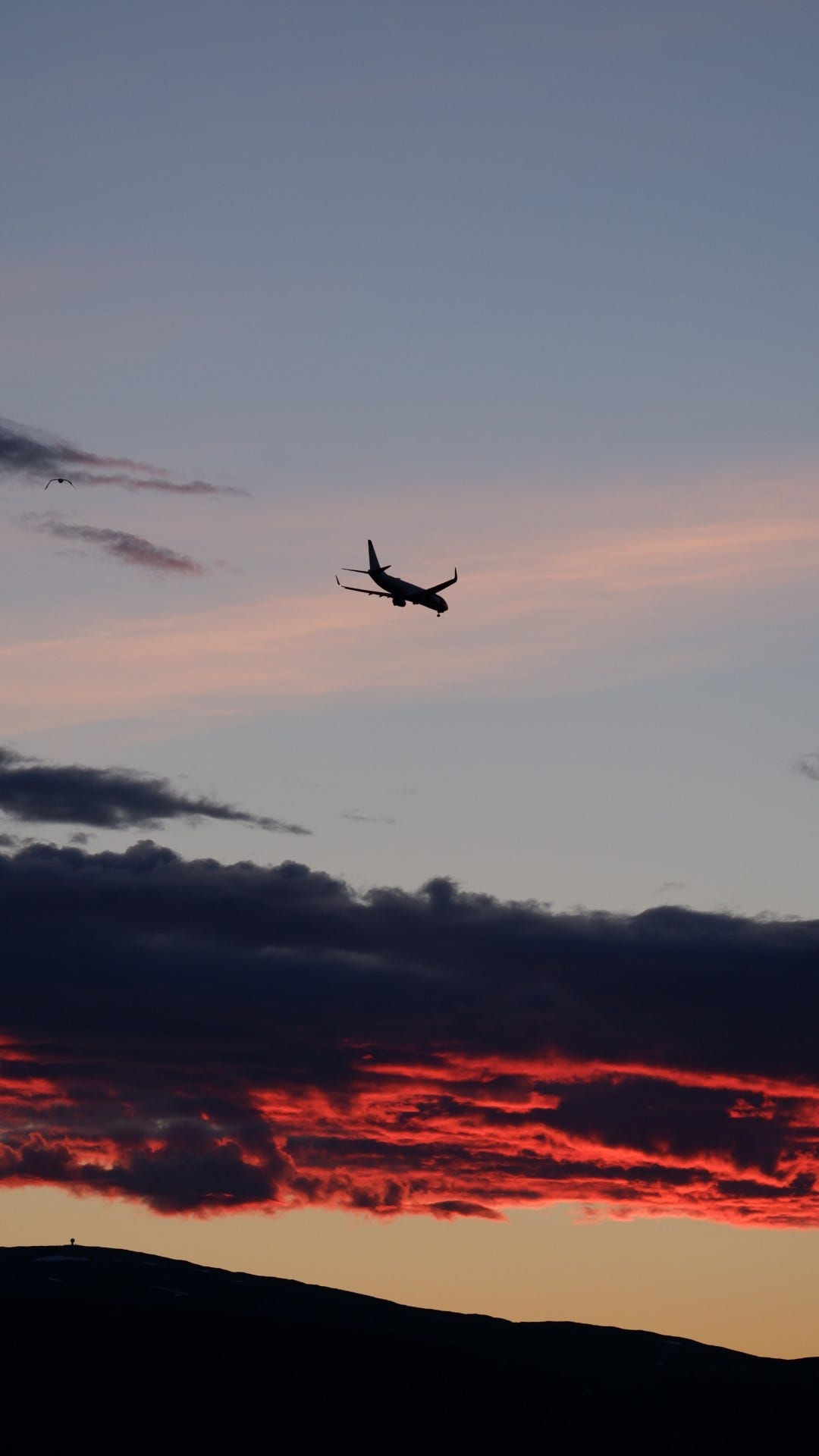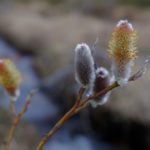It occurred to me today, while waiting at a bus stop in town, that living on an island in the far north might be like living on a ship, albeit a very large one. It is fair to confess that I have never lived on a ship, but I have traveled on ships, which included all the eating, drinking, sleeping, and other necessities of daily life you might expect. The tricky part is you cannot avoid the weather. You cannot avoid being tossed about. Weather and tossing about comes from all directions on a ship. There is no escape, not even below deck. Rain, wind, water, clouds, the sea, more rain, wind, water, clouds, the sea. This has been the pattern of our weather for the month of May. Thinking of this, I glanced at my grocery sacks to make sure they were secure. A little rain will wreck a loaf of bread. Today a constant rain fell, a hard rain. I have seen the sun on just three occasions this month, three days without rain or clouds.

May began for me on May 9th, which is when I returned to Norway from the United States. My friend Marte met me at the airport. She met me around midnight, with a car, a carton of strawberries, and an energy drink. I have known Marte for years now, and she has never seen me drink an energy drink. I asked her, “What’s the energy drink for?” “I thought you could use the energy.” She watched as I tossed my duffel bag into the back of her car. “You look different. You are tan. You are a mess, too. Have some strawberries.” She wasn’t wrong. I was a mess. A stomach bug hit me on April 28th. A respiratory illness found me a week later. My final two weeks in the United States had been a mad dash of an exhibition, a play, a film, time with dear friends, watching The Crown, planning projects, sleeping between 4 and 5 hours a night, vomiting, avoiding ghosts and ghost stories whenever possible, which was not possible, huddling under a blanket while feverish and nauseated on Megan’s couch, staring in befuddlement at Charlie Pepiton’s father, Gene, who sung to me not one but TWO verses of a song from his childhood, which he intended, I think, to be a comfort to me: My little dear, oh how I love you, but you’re scattered everywhere. And then, as a sort of farewell to the United States, as if the United States was saying kiss my ass on my way out the door, I spent $30 on a tiny cup of cantaloupe and side salad at JFK. Mercifully I cannot remember anything about the three flights back home.

An hour later, Marte deposited me and my bag on the front porch of my house. She hugged me. After the hug, she looked at me and might have shaken her head. “Take care of yourself, D.” Then off she went. At least I was in the North again.
So much had changed. Nearly all the snow had melted. The snow seems to have melted faster this year than in years past. I had left the land of winter and returned to a land of sudden thaw. That only happens with rain. The half-acre of home ground bore all the signs of a steady melt. The rivulets on the east end of the property overflowed. Clumps of grass had been gouged away. The fire pit stood useless, water soaked. It was obvious where my family had cleared broken limbs and foliage and where, too, they had planted flowers in the recently liberated beds. Looking a bit uncertain about whether it was too early to open, the birch leaves and grasses gave a tenuous olive color to this otherwise grey world. Twenty-four hours of light had returned. A small group of reindeer, with maybe 8 members in their tiny tribe, had taken up residence on the hillside below our property. Moose grazed closer to the roads. Otters, whom we have been missing for the past two years, once more found home in the sea just out from the naust. This was spring or something like it.
I do not understand why, but for much of this year, I have been feeling that life is passing too quickly—a sudden change of the season, the return of light, the greening, the thaw, the end of something and other uncertainties. After the April stomach bug and respiratory illness, I’ve taken a slow crawl back to health. I regret not being able to get outside more, though hardly anyone has, given our recent weather. The fact is we have only so many days without winter or snow. Our bodies require a few days of sunlight. We must get our sunlight while we can or we risk entering another møketid without having had enough sun, enough shirtless days restoring our bodies back to relative ease and vitamin D. Yes, we can go outside in the rain. We can go outside when it’s cold. There is no arguing with the weather in the North. To live here, to manage at all, requires a struggle with the weather. To engage this struggle, some locals say demands wearing better clothes or at least the correct clothes. Yet to steal again a favorite line from Ernest Hemingway, isn’t it pretty to think so? Of course, wearing better clothes (or the correct clothes) does protect us from the weather, at least to an extent. There are stories of sad hubris, typically associated with the young, of individuals who have perished. I was told about a teenage girl who had decided to walk home after a party, having drunk a little too much and wearing, it was said, a miniskirt, halter top, and a thin winter coat. She apparently got exhausted on her walk home and sat down to text with friends. That is how her body was found, frozen and dead, with her phone in her hand and the battery long expired, at the top of a pass above her village. The village, if I were to drive there, is twelve hours further north from where I live.

One of my mentors from when I was a young man would sometimes say before starting on a hard trip or difficult project, “Patience and tolerance, patience and tolerance.” It was with this mindset, and while also wearing rain tested raincoats and wool sweaters, that my youngest son and I planted this year’s strawberries and potatoes. For the past 7 years, we have cultivated strawberries from 50 plants established in a patch on the eastern edge of the property. But the strawberries took a hit this winter. All but 3 of the plants had died. The runoff might have killed them. Or it could have been they were smothered under grass clippings from our final mow last autumn that didn’t, after all, turn into mulch. My son and I dug out the lethargic roots and lined the holes with enriched soil and then stuffed the plants into the holes. We will see if they make it. They’re looking healthy. They were not looking healthy on May 27th, after the band of reindeer living below our house decided to graze uphill, step over a downed section of fence, and nibble each plant out of its newly begotten hole. Since that day the plants have been restored, so has the fence.
Potatoes are a special crop in Norway, special because potatoes will grow here when not much else does. Certainly this is true in the North, where so little that is not native cannot grow. It wasn’t until the 18th or possibly the 17th century that potatoes found their way to Norway, beginning in the south. It didn’t take long for the potatoes, or as one 18th century Norwegian potato farmer called them, Jord-frugt, or “earth fruit,” to spread over the country. Neighbors have pointed out fields along the coast that were once planted in potatoes. Potatoes and fish were how Northern people survived. Our 7’ x 15’ plot of potato ground is far from an act of survival. But each year for the past 7 years we have turned over the soil and raised mounds for the plants. The soil is incredibly rocky, which makes work out of digging, but at the same time, the rocky soil allows for significant water drainage. Otherwise, our house and property might very well slide into the sea. As I turned over the soil, my youngest son raked and piled the loose stones. I shaped the mounds and tamped down the rows between them. The boy then dropped the potatoes into the mounds and covered them. When we finished, we were tired, mud covered, and wet. Even so, we didn’t go inside the house right away. We stood side by side in the yard and surveyed our work. The mountains across the sund were cloud covered. More rain blew in from the west, and I asked my son how he felt.
“Bewildered,” he said.
“Why?”
“Because this exists. Because we are here.”

With the potatoes in the ground, the earth and weather will work their magic. Each year I plant potatoes, I remember a man who told me a story about how as a young boy he had helped his father plant and harvest potatoes. As he grew older, he recognized that his father’s way of life was nearly finished. There were more shops, more imports, more money to purchase food, including potatoes. But year after year they had filled the cellar—potet kjeller—with as many potatoes as it could hold. The man spoke about how much work it had been, especially for a young boy. He spoke about how his hands became sore and filthy. “But what we had,” he said, as he held up a potato for me, “was the perfect Norwegian potato.” The perfect Norwegian potato. We had planted our share of potatoes, the boy and I, though not very many, and I doubt any of them will be perfect. Maybe in September or early October we can harvest them. We’ll want to harvest them before the first snowfall, when the leaves start to turn a pale shade of yellow. Things will be different then. Something else will be in the air, but it is too early to think about that. For now, we must wait for the rain to cease and for the ground to dry. We must go on waiting for the sun. Otherwise, all this plowing from counter to cabinets to refrigerator with groceries, from window to window, from pen to paper, may cause some of us to sink.
